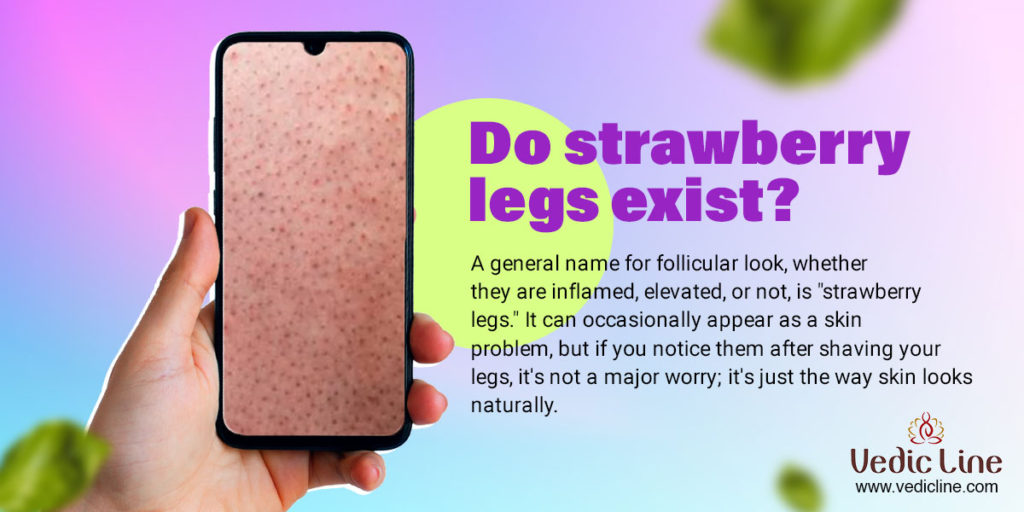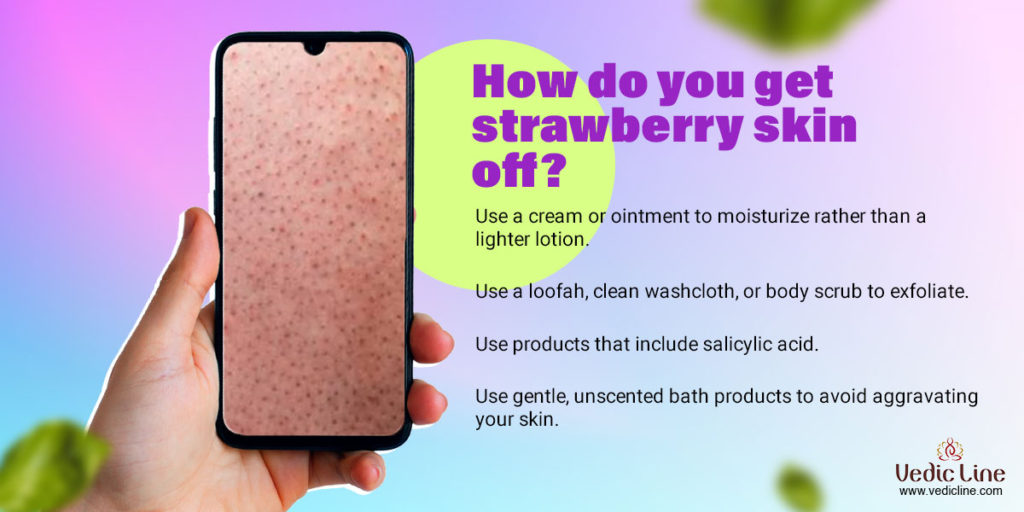Unveiling the Mystery of Strawberry Legs

Strawberry legs, characterized by small, dark spots or black dots on the skin’s surface, are a common but often perplexing skin condition. These spots resemble the seeds on a strawberry, which is how the condition got its colloquial name. While strawberry legs are generally harmless, they can be a source of self-consciousness and discomfort. In this comprehensive guide, we will delve into the causes of strawberry legs, effective treatments, and strategies for prevention.
Understanding Strawberry Legs
Before delving into treatment and prevention, it’s essential to understand what strawberry legs are and what causes them.
What are Strawberry Legs?
Strawberry legs are a colloquial term for a condition formally known as “pseudofolliculitis.” It is characterized by the presence of dark or black dots on the skin’s surface, primarily on the legs. These dots may resemble the seeds on a strawberry, hence the name.
Common Features
Dark Spots: The most noticeable characteristic of strawberry legs is the presence of dark spots on the hair follicles. These spots can make the skin appear speckled or mottled.
Enlarged Pores: Strawberry legs may also involve enlarged or open pores, contributing to the appearance of dark spots.
Ingrown Hairs: The dark spots are often caused by ingrown hairs, where the hair shaft curls back into the skin instead of growing out. This can result in inflammation and the accumulation of melanin, the pigment responsible for skin color, around the hair follicles.
Causes
Understanding the causes of strawberry legs is crucial for effective treatment and prevention.
1. Ingrown Hairs:
Ingrown hairs are a leading cause of strawberry legs. When a hair follicle becomes clogged with dead skin cells, dirt, or excess sebum, it impedes the proper growth of the hair. As a result, the hair curls back into the skin, leading to inflammation and the formation of small dark spots.
2. Shaving:
Frequent shaving can contribute to the development of strawberry legs, especially if it’s done incorrectly. Using dull razors, shaving against the grain, or neglecting to exfoliate before shaving can increase the risk of ingrown hairs and strawberry legs.
3. Dry Skin:
It is possible for strawberry legs to become worse with dry skin. When the skin lacks adequate moisture, it is more prone to trapping hair follicles, leading to ingrown hairs and dark spots.
4. Excess Sebum Production:
Overproduction of sebum, the skin’s natural oil, can lead to clogged hair follicles and the formation of strawberry legs. This condition is more common in individuals with naturally oily skin.
5. Dead Skin Buildup:
Failure to exfoliate regularly can result in the accumulation of dead skin cells on the skin’s surface. This can contribute to clogged hair follicles and the development of strawberry legs.

Treating
Treating strawberry legs involves a combination of approaches to address the underlying causes and improve the skin’s appearance.
1. Exfoliation:
Exfoliation is a crucial step in the treatment of strawberry legs. You can remove dead skin cells by exfoliating regularly to keep your skin smooth. Consider using a gentle scrub or an exfoliating brush. It’s important not to over-exfoliate, as this can irritate the skin.
2. Moisturization:
Keeping your skin well-hydrated is essential to reduce the appearance of strawberry legs. Use a moisturizer that suits the type of your skin and apply it regularly.
3. Proper Shaving Techniques:
If you shave your legs, adopt proper shaving techniques to reduce the risk of ingrown hairs. When shaving, use a clean, sharp razor and move in the direction of hair growth. Avoid shaving against the grain, as this can increase the likelihood of ingrown hairs.
4. Hair Removal Alternatives:
You might want to consider alternatives to shaving, such as waxing or using depilatory creams. As opposed to shaving, these methods can help prevent ingrown hairs.
5. Topical Treatments:
Several topical treatments can help fade dark spots on the skin. Look for products containing ingredients like glycolic acid, salicylic acid, or retinoids. These ingredients can exfoliate the skin and improve its texture over time.
6. Professional Treatments:
If persist despite home treatments, it may be advisable to consult a dermatologist. Dermatologists can recommend more advanced treatments like laser hair removal or chemical peels to address the issue effectively.

Preventing
Preventing is as important as treating them. By implementing preventive measures, you can reduce the likelihood of reoccurring.
1. Regular Exfoliation:
To prevent from returning, make exfoliation a regular part of your skincare routine. Aim to exfoliate 1-2 times per week to keep the skin smooth and free of dead skin cell buildup.
2. Hydration:
Stay well-hydrated by drinking plenty of water and using a moisturizer suited to your skin type. Hydrated skin is less likely to trap hair follicles.
3. Proper Shaving:
If you choose to shave, remember to follow proper shaving techniques to minimize the risk of ingrown hairs. Make sure you use a sharp razor and don’t shave against the grain.
4. Hair Removal Alternatives:
Consider alternative hair removal methods like waxing or depilatory creams, which can help reduce the occurrence of ingrown hairs.
5. Skin-Friendly Products:
Use skincare products that are non-comedogenic and suitable for your skin type to minimize the risk of clogged pores.
6. Sun Protection:
Protect your skin from excessive sun exposure, as UV rays can exacerbate skin discoloration.
If you are going to spend time outdoors, make sure you apply broad-spectrum sunscreen with at least SPF 30.

Conclusion:
Strawberry legs can be a frustrating skin condition, but with the right care and attention, you can improve their appearance and prevent them from recurring. Regular exfoliation, proper shaving techniques, and moisturization are key components of managing.If these methods don’t yield satisfactory results, consult a dermatologist for professional guidance and treatments. Remember that consistency and patience are crucial when addressing this common skincare concern. By implementing the strategies outlined in this guide, you can effectively manage and prevent & promoting smoother.
